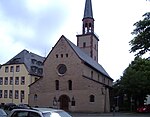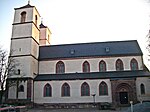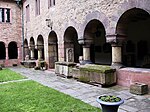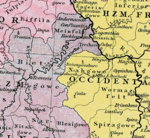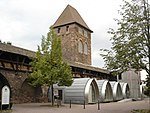Bischofshof

The Bischofshof palace (German: Schloss Bischofshof or English: Bishop's Court or English: Bishop's Palace) was a former Baroque-style palace in Worms, Germany. It was located next to the Worms Cathedral, on its northern side, on the current Schlossplatz (English: Palace Square)). It served as the main residence of the prince-bishops of Worms. In the Middle Ages, the first palace was originally constructed as a Kaiserpfalz, a temporary seat of the Holy Roman Emperor. This building became later the court of the prince-bishop of Worms. It was destroyed during the Nine Years' War in 1689. Between 1719 and 1725, it was rebuilt as a baroque-style palace with involvement of the architect Balthasar Neumann. It was elongated structure with side wings, featuring a central Avant-corps facing the palace square. During the French Revolutionary Wars, the episcopal palace was destroyed in 1794. In the 19th century, a patrician built the so-called Heyl-Schlösschen, which remains till today. From the Bischofshof palace nothing remains except a vaulted cellar in the Heyl garden.
Excerpt from the Wikipedia article Bischofshof (License: CC BY-SA 3.0, Authors, Images).Bischofshof
Lutherring,
Geographical coordinates (GPS) Address Nearby Places Show on map
Geographical coordinates (GPS)
| Latitude | Longitude |
|---|---|
| N 49.6323 ° | E 8.3601 ° |
Address
Lutherdenkmal
Lutherring
67547 , Worms-Zentrum (Innenstadt)
Rhineland-Palatinate, Germany
Open on Google Maps



